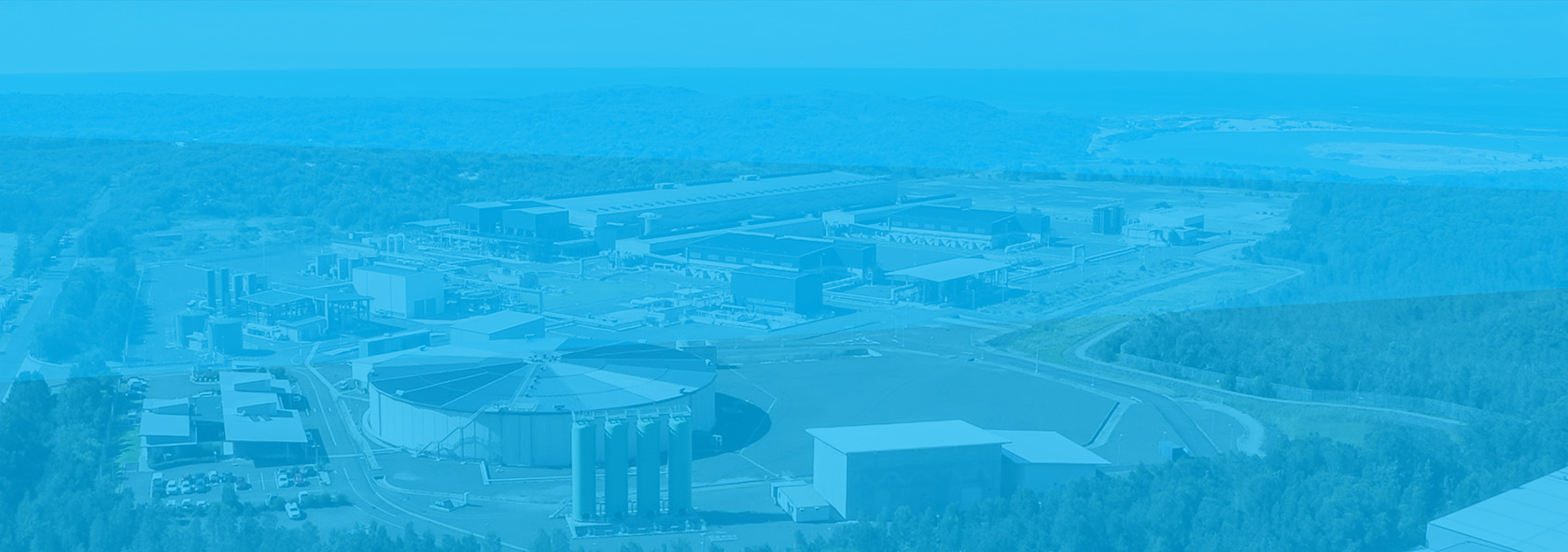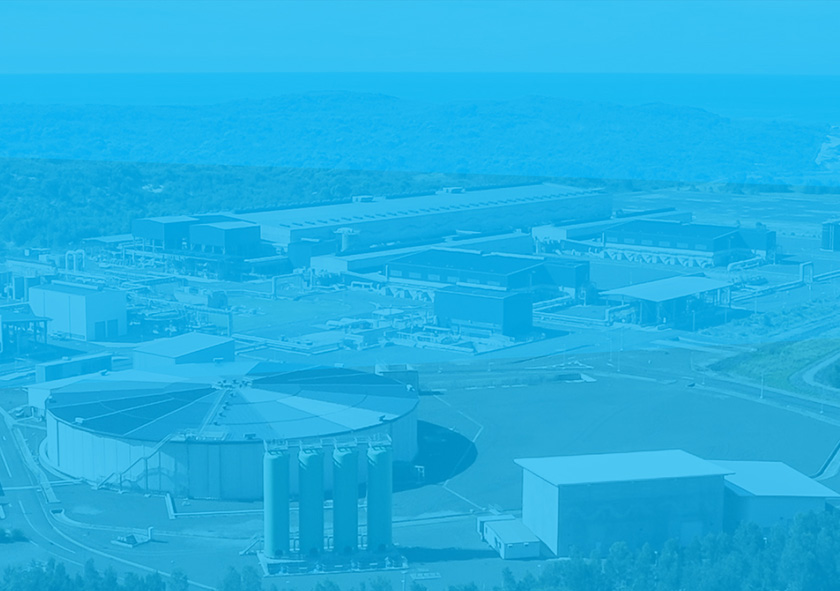


million litres
of high-quality
drinking water a day
The Sydney Desalination Plant was originally constructed with expansion in mind and the expectation that in the future it could produce
up to 500 million litres of high-quality drinking water a day – double its current capacity.
The land area for the Plant site at Kurnell is suitably sized to accommodate an expansion. Major infrastructure such as the seawater tunnels, inlet structure and delivery pipeline have already been constructed and planning approvals are in place.
This means that when Sydney requires additional non-rainfall dependent water supply, the Sydney Desalination Plant is well placed to deliver a quick and cost-efficient solution.

SDP is well-placed to deliver timely and cost-efficient expansion should the need arise in future.
In 2019, when Greater Sydney’s dam storage levels fell to their lowest levels in more than a decade due to drought, the NSW Government formally asked SDP to begin the planning process for an expansion.
At the time, SDP prepared and submitted preliminary plans, that were approved by the Government.
However, the planning works were put on hold in May 2020 after significant rainfall ended the drought and replenished Sydney’s dams.
The Government’s Greater Sydney Water Strategy released in August 2022 highlighted the need for additional non-rainfall dependent sources of drinking water in the next five to 10 years due to Sydney’s population growth and the ongoing management of climate change challenges. The Plant's possible expansion is included in the future options being considered.
The Strategy noted that any new non-rainfall dependent water supply option would only be introduced following community consultation and stringent Government approvals. With a growing population and increasing climate-related stresses putting pressure on Sydney’s water supply in recent years, the Plant has demonstrated the vital role it can play in assisting Sydney Water in managing the city’s water needs.
Our mission
We are committed to providing great water and value to Sydneysiders at all times.
Find out moreCaring
for the ocean
We work hard to ensure our operations have minimal impact on the local marine environment.
Find out moreFrequently Asked Questions
- Is the Sydney Desalination Plant operating?While the Plant was originally designed to operate only in times of drought, it has remained operational since 2019 to help address several storage dam water quality issues arising from bushfires, flooding and significant maintenance tasks in Sydney Water’s supply network.
The Sydney Desalination Plant’s WICA Network Operator’s Licence enables the Plant to remain operational, recognising that the Plant has always been, and will continue to be, an essential component of Sydney’s water management and an integral part of our city’s water-resilient future. - How much water does the Plant produce?The Plant can provide up to 15 per cent of Sydney’s average drinking water needs without any reliance on rainfall.
It treats, filters and re-mineralises seawater to produce up to 91.25 gigalitres per annum of high-quality drinking water.
Under our WICA Network Operator’s Licence, the Plant will operate on a “flexible full-time basis”, producing between about 20 gigalitres to 91.25 gigalitres every year. - What does desalinated water taste like?Sydney Desalination Plant water is treated to taste the same as Sydney’s other drinking water.
Like dam water, water from the desalination plant is treated to meet Australian Drinking Water Guidelines, which makes it among the best in the world. - Who owns the Plant?Sydney Desalination Plant is jointly owned by the Ontario Teachers’ Pension Plan Board and the Utilities Trust of Australia, which is managed by Morrison. Find out more on our About Us page.
- Why is desalination important?The Sydney Desalination Plant is Sydney’s only major sources of non-rainfall dependent drinking water. It is one effective way of securing Sydney’s water supply against the effects of climate change and natural disasters and the increase in demand due to population growth, warmer weather and urban greening projects.
While the Plant was originally designed to respond to Australia’s severe millennium drought, recent experiences have demonstrated that drought is only one type of event that requires support from the Plant to ensure clean and safe drinking water for Greater Sydney.
The Plant has been a reliable drinking water supply during floods and bushfires, which caused water quality challenges from time to time in Sydney’s storage dams. - Where does the water go?The Plant can supply water to homes and businesses south of Sydney Harbour and as far west as Bankstown, as part of all their water supply.
Sydney Water uses a variety of water sources to supply customer needs. Where your water comes from depends on demand and where in Sydney you live.
If you live in the blue-shaded area on this map, you may receive water from the dams, the Sydney Desalination Plant or a combination of both. The Plant's water proportion will change throughout the day due to variations in supply and demand.
Everyone will benefit from desalination because it allows more water to be left in the dams, which means a more secure water supply for Sydney. - How much energy does the Plant use?The Sydney Desalination Plant requires roughly 38 megawatts at full production and is 100 per cent powered by renewable energy.
The average energy needed to provide drinking water to one household is about the same as the energy used to run a household fridge. - What’s the impact on the environment?Sydney Desalination Plant places a high priority on minimising any environmental impacts – both on land and in the water.
To support this, the Plant has put in place a world first stringent six-year marine environment monitoring program. The marine environment was monitored for three years before construction and three years after the Plant became operational. It demonstrated that the Plant has minimal effect on the marine environment.
On land, a third of the Plant site at Kurnell has been maintained as a conservation area. This area is protected, and native species of flora and fauna are regularly monitored. This includes a program to survey the numbers of grey-headed flying foxes and green and golden bell frogs in the area.


